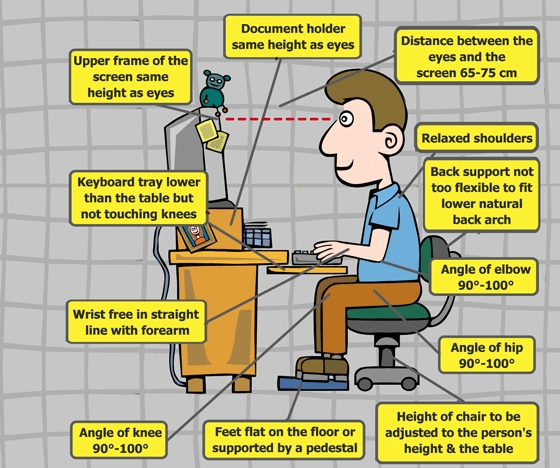PHYSIOTHERAPY
CAREER
INFORMATION
|
SECTION I: QUESTIONS AND ANSWERS
|
PHYSIOTHERAPY:
THE PROFESSION
1. What
is physiotherapy?
Physiotherapy is a first-contact,
autonomous, health profession primarily directed towards the prevention or
alleviation of movement dysfunction in people.
Movement is an essential component of life and health. Physiotherapy helps keep people in motion throughout
all ages of life.
The practice of physiotherapy is anchored in the movement sciences and
concerned with the function of multiple body systems. The profession is dedicated to:
Ø restoring, improving or prolonging physical performance and functional
independence
Ø preventing and managing pain, physical impairment and disability
Ø promoting fitness, health and wellness
2. What
do physiotherapists do?
Physiotherapists work with individuals with temporary, or permanent, mobility
problems caused by injury, disease, aging or birth abnormalities.
They assess clients to determine their physical status and the potential
for change. Therapy, when indicated,
often focuses on:
Ø decreasing pain
Ø increasing joint movement and flexibility
Ø building muscle strength and endurance
Ø improving balance and co-ordination
Ø enhancing tolerance in exercise and daily activities, and
Ø educating about the condition and therapy program.
Physiotherapists use a variety of techniques and modalities in their
practice, including:
Ø therapeutic exercise and specific techniques of mobilization,
manipulation and facilitation
Ø physical agents such as heat, cold, water, electrical energy,
acupuncture
Ø functional activity training and reconditioning
Ø assistive devices such as canes, crutches, walkers, braces and
artificial limbs.
An important part of the therapy program is providing advice on ways to
prevent further injury or deterioration.
3. With
whom do physiotherapists work?
Physiotherapists work with members of the health care "team"
including physicians, occupational therapists, nurses, social workers, speech
language pathologists, pharmacists, teachers, etc. The physiotherapist may work with one or many
of the team members in order to meet a client's needs.
4.
Where
do physiotherapists work?
Physiotherapists work predominantly in hospitals, rehabilitation
centres, and private practices. They also
work in nursing homes, home care and community agencies, industrial health
units, schools, sports clubs or clinics, the armed forces and universities.
5. What are the working hours / salary scales / fringe benefits
/ job possibilities?
6-8 HOURS IN HOSPITALS AND CLINICS,IN SLIMMING CENTRES AND GYM PART TIME 4 HOUR JOBS AVAILABLE.PRIVATE
HOME VISITS.
6. Where can the profession lead?
It can lead to a variety of interesting and challenging jobs in the
health care system. Many
physiotherapists today develop a specialized area of interest such as
paediatrics, geriatrics, neurology (stroke, spinal cord injuries, brain injuries)
cardiorespiratory (heart and lung problems) and orthopaedics (broken bones,
back problems, arthritic conditions, sports
injuries, etc.). Some physiotherapists
pursue a doctorate degree and become involved in research and/or physiotherapy
education.
7. Is
there a professional body?
Yes,IAP INDIAN ASSOCIATION OF PHYSIOTHERAPY.
8. Must physiotherapists be licensed to practise?
Yes, Physiotherapists must be licensed in order to practice in IAP. It is a legal requirement. Each province has
a licensing board.MAHARASHTRA ALSO FORMED COUNCIL OF OT/PT.
Maharastra council of ot/pt provides you registration number with also a
personel identity card.Only those who studied from Maharashtra state from
recognised college can get registered through the process.
PHYSIOTHERAPY:
THE EDUCATION
1. What are the educational requirements? How long will it take?
Currently in India, the basic educational requirement is a bachular
degree in Physiotherapy (i.e. B.P.Th.).
Following high school, it will take a minimum of four years +intership
of university study.
Within the next several years, the basic requirement for Physiotherapy entry-to-practice
will change from a Bachular degree to a Masters degree. Many universities
in India are currently offering Masters Entry-Level Physiotherapy Programs. The other universities are moving in this
direction. It
is important to keep current on the admission requirements for the individual institutes.
2. What are the academic pre-requisites?
The requirements for admission into a Physiotherapy career vary from
university to university. Generally,
students benefit from a strong science background. Specific pre-requisites for each university
program are outlined in the respective university calendars and websites.
3. Where
can one study?
1.AIIMS UNIVERSITY
2.MUHS
UNIVERSITY
3.ALGAPPE UNIVERSITY
4.DEEMED UNIVERSITY
4. What
can I expect while studying physiotherapy?
You will be very busy. Academic
loads are heavy. Subjects include
anatomy, neuroanatomy, kinesiology, exercise physiology, neurophysiology, electrotherapy,
orthopaedics, neurology, cardiorespirology, etc. Clinical skills labs are also part of the
curriculum.
Workplace experience is gained through fieldwork placements in a variety
of health care settings (hospitals, rehabilitation centres, home care/community
agencies, nursing homes and private clinics). Students work under the guidance
of qualified therapists to develop and enhance their clinical knowledge and skills.
Clinical placements are interspersed throughout the academic program.
5. How
much will the course cost?
Costs vary from university to university. Tuition fees currently range from 40,000
-75000per year, while residence fees (room and board) range from approximately 25000/-per year for a single room. Books, uniforms and other incidentals are
additional expenses.
PHYSIOTHERAPY:
THE APPLICANT
1. What
are the personal pre-requisites?
Desirable personal traits include:
(1) a strong interest in how
the human body functions and moves,
(2) a desire to work with persons with physical disabilities, (3) an
ability to work collaboratively with others, (4) good communication and
interpersonal skills, (5) physical fitness and emotional stability, and (6) an
enthusiastic and caring personality.
2. Should
I have alternate career choices?
Acceptance into a Physiotherapy Program is highly competitive. Selection is usually based on a combination
of marks, personal qualities, and non-academic achievements. Application to more than one university is
strongly advised, as are alternate career options.
3. How
can I best learn about physiotherapy?
Visit at least two physiotherapy departments to see physiotherapy in
action. Ask lots of questions of
physiotherapists, physiotherapy students, or physiotherapy
patients/clients. Explore the scope of
practice and the different work settings. Summer employment or volunteer work
with children, seniors, or adults with physical disabilities is an asset.









